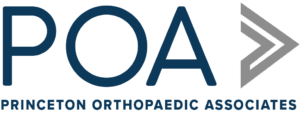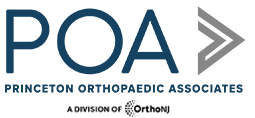
Book An Appointment
Physician Assistants
Physical & Occupational Therapists
KneeMRI ScansNon-OperativePhysiatry
Physical Therapy
Podiatry
Spine
Sports Medicine
TraumaUrgent Care
X-Ray Imaging

People with persistent or severe shoulder pain may have a separated shoulder condition. This happens when the ligaments that connect the collarbone to the shoulder blade are stretched or torn. The injury can be mild, requiring mainly painkillers and some TLC, or severe, requiring surgery. The shoulder experts at Princeton Orthopaedic Associates can diagnose your shoulder separation and recommend the best treatment.
A separated shoulder isn’t necessarily what it sounds like. Some people might imagine the humerus (upper arm bone) separating from the shoulder joint, but that isn’t the case. It involves the clavicle, the long bone at the top of the shoulder. Also, the bone doesn’t have to be separated entirely from the shoulder to be considered a “separated shoulder.”
The clavicle is connected to the shoulder blade with a series of ligaments. If the shoulder is injured, you could stretch those ligaments. In more severe cases, the ligaments are torn, causing the clavicle to pop up and creating a bump at the top of the shoulder.
Symptoms of a separated shoulder include pain, swelling, a bump on the shoulder, arm weakness, and limited mobility of the shoulder or arm.
Treatment for a separated shoulder depends on the severity of the injury. If only the ligaments around the clavicle are involved, and if they are just stretched, treatment may be as simple as using over-the-counter painkillers and anti-inflammatories, such as ibuprofen, and resting and icing the shoulder regularly. You may need physical therapy once the shoulder is healed to bring full mobility back.
In cases where the ligaments are torn, or other injuries are involved, such as a torn rotator cuff, surgery may be necessary to repair the shoulder and restore proper movement. During the surgery, the surgeon makes an incision and repairs the ligaments. Often, this can be done arthroscopically, which allows for faster healing. In more severe cases, a larger incision might be needed to install a plate to stabilize the shoulder and allow it to heal correctly. The plate is usually removed once the shoulder is healed.
You will require physical therapy to return full mobility to the shoulder. The patient will wear a sling for about four weeks before beginning lower arm exercises. Shoulder exercises could start as soon as six weeks after surgery. Full recovery can take up to six months.
